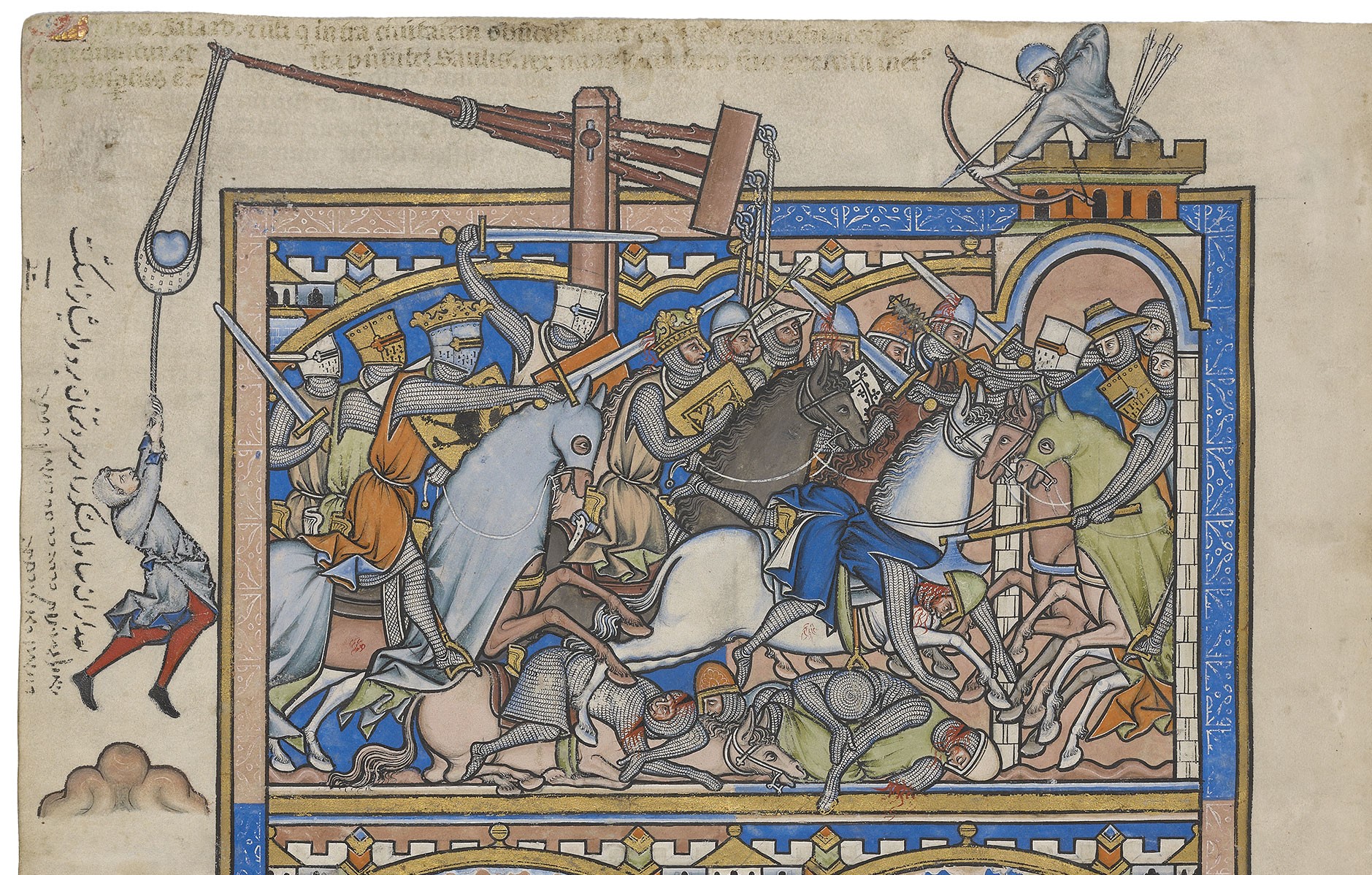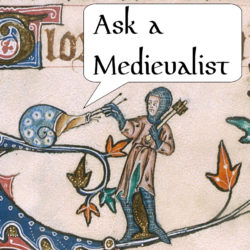Synopsis
Trade goods weren’t the only things that moved along the Silk Road. Join Em and Jesse as they trace the history of an interesting artistic motif that made it from China all the way to England!
Notes
0/ Credit to Hither, Page, by Cat Sebastian, for bringing this topic to my attention.
1/ Previous episodes on trade routes were ep 83 (Old Silk Road, Take Me Home) and 84 (Trans-Saharan Trade).
2/ The Three Hares: this blog (http://www.vikkiyeatesillustration.co.uk/blog/a-brief-explanation-of-the-three-hares-symbol) has many example illustrations!
3/ “Wheel of Dharma, turn turn turn! Tell me the lesson that I must learn!” https://en.wikipedia.org/wiki/Dharmachakra
4/ According to Wikipedia, among vertebrates, natural parthenogenesis is only reported in lizards, snakes, birds, and sharks. (And maybe amphibians and snakes? Whoever wrote this didn’t do a great job.) It has been artificially induced in pigs and mice. (https://en.wikipedia.org/wiki/Parthenogenesis) I can’t believe I’m writing a note about this.
5/ Taylor Mac’s piece is A 24-Decade History of Popular Music. https://en.wikipedia.org/wiki/A_24-Decade_History_of_Popular_Music Trailer here: https://www.youtube.com/watch?v=ZwnddB4dFYk I wish I lived in New York and could just be weird for a living.
6/ Jesse explains why rabbits are not kosher a little oddly—in order to be kosher, a land animal must have cloven hooves and it must chew its cud. Even if rabbits chewed their cud (they don’t), they don’t have hooves. (The weird part of all this is “ergo, they’re rodents and not suitable for consumption.” That part I can’t explain.)
7/ Rabbit starvation? It looks like the general idea is that because rabbit meat is very low fat and high protein, if you eat only that without other fats in your diet, you can intake so much protein you overwhelm your kidneys and they dump bad stuff into your bloodstream. Also called mal de caribou. Charles Darwin mentions this in The Voyage of the Beagle:
We were here able to buy some biscuit. I had now been several days without tasting anything besides meat: I did not at all dislike this new regimen; but I felt as if it would only have agreed with me with hard exercise. I have heard that patients in England, when desired to confine themselves exclusively to an animal diet, even with the hope of life before their eyes, have hardly been able to endure it. Yet the Gaucho in the Pampas, for months together, touches nothing but beef. But they eat, I observe, a very large proportion of fat, which is of a less animalized nature; and they particularly dislike dry meat, such as that of the Agouti. Dr. Richardson also, has remarked, “that when people have fed for a long time solely upon lean animal food, the desire for fat becomes so insatiable, that they can consume a large quantity of unmixed and even oily fat without nausea:” this appears to me a curious physiological fact. It is, perhaps, from their meat regimen that the Gauchos, like other carnivorous animals, can abstain long from food. I was told that at Tandeel, some troops voluntarily pursued a party of Indians for three days, without eating or drinking. (https://www.gutenberg.org/cache/epub/944/pg944-images.html)
8/ The hoopoe: https://en.wikipedia.org/wiki/Hoopoe
9/ Oberammergau was Episode 52.
10/ Swastika from 10,000 BCE: https://en.wikipedia.org/wiki/Mezine and https://en.wikipedia.org/wiki/Swastika
11/ Triskelion: https://en.wikipedia.org/wiki/Triskelion
Triquitera/trefoil knot: https://en.wikipedia.org/wiki/Trefoil_knot#In_religion_and_culture
12/ Sicily flag: https://en.wikipedia.org/wiki/Trefoil_knot#In_religion_and_culture
Isle of Man flag: https://en.wikipedia.org/wiki/Flag_of_the_Isle_of_Man
13/ Image of the three hares on a late-12th-century or early-13th-century Iranian brass tray: https://www.chrischapmanphotography.co.uk/hares/page5.htm (no images are available of the 1281/2 copper coin minted in Iran, possibly for the Mongolian empire)
14/ “The Mongols were basically fine…” as long as you weren’t in China. (Wince)
15/ The three hares motif was popular in synagogues in Germany and Eastern Europe: Khaimovich, Boris. 2011. “On the Semantics of the Motif ‘Three Hares Chasing Each Other in a Circle’ on Jewish Monuments in Eastern Europe.” East European Jewish Affairs 41 (3): 157–80.
16/ English bosses: a “boss” (an architectural feature that protrudes from a ceiling) is in fact etymologically related to “emboss” (“to ornament with raised work”). They both descend from the old French (i.e. 12th century) boce, “hump, swelling, or tumor.” https://www.etymonline.com/word/emboss
This makes sense because the one Em is thinking of (where you press a design into something) is actually “deboss,” which comes from “de”+”emboss” and so is related to both via the transitive property of etymology.
Numerous great pictures of the wide variety of three-hares bosses in England:
https://www.chrischapmanphotography.co.uk/hares/haresmen.htm
https://dartmoorexplorations.co.uk/the-three-hares/
17/ Bishop Walter Branscombe, Exeter Cathedral, Devon: https://en.wikipedia.org/wiki/Walter_Branscombe
CORRECTION: His (painted) cloth is clearly from the East via the Silk Road, but it contains different animal motifs (NOT the three hares specifically). https://www.chrischapmanphotography.co.uk/hares/page4.htm
18/ Tinners are tin miners. Not people who put things in tins.
19/ We recorded this episode like two years ago and this T-shirt meme example is so no longer relevant. [All good memes come back around! And these are still around.–Jesse]
20/ Isle of Man motorcycle race is the Isle of Man TT: https://en.wikipedia.org/wiki/Isle_of_Man_TT From 1927 to 2023 there were 156 fatalities. In 2022, there were six, making it the most deadly year since 1970 (this counts deaths both during practices and during the actual event).
21/ The Isle of Man is a crown dependency. It is self-governing; currently, Charles III is Lord of Mann. The UK will defend the island, but it is a separate international entity in other respects.
Jesse: Oh WOW, did we record this before the Queen died?!
Podcast: Play in new window | Download

